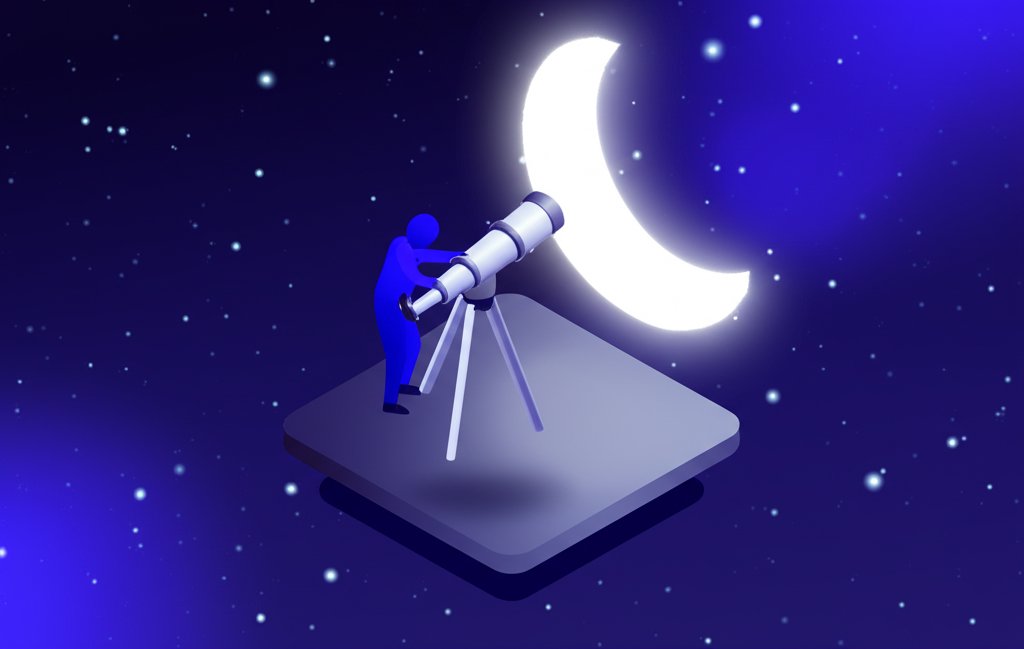The world of puzzles is often a delightful convergence of language, logic, and discovery. Few moments capture this magic better than when a seemingly ordinary phrase transforms into something profound through the art of wordplay. Such was the case with the now-famous NYT Crossword Anagram that left solvers buzzing: the intriguing phrase “moon starer” elegantly rearranges its letters to reveal the scientific profession of an astronomer. This ingenious connection, particularly highlighted by its appearance in the New York Times Mini Crossword, showcases the captivating power of linguistic dexterity and the universe it explores.
This article dives deep into the brilliance of this specific anagram, exploring its appeal, the underlying principles of wordplay, and why it resonated so strongly with puzzle enthusiasts and casual observers alike. We’ll uncover the secrets to mastering such linguistic puzzles and appreciate the profound connection between language and the cosmos.
The Genius Behind the NYT Crossword Anagram: “Moon Starer” to “Astronomer”

On May 22, 2024, the New York Times Mini Crossword delivered a clue that simultaneously delighted and challenged its vast audience. The clue, often phrased as “Like the anagram ‘moon starer’ for ‘astronomer’”, subtly directed solvers to the descriptive nature of the phrase itself. While the official three-letter answer to the clue was “APT” (aptly describing the relationship), the true marvel lay in the anagrammatic transformation: “moon starer” into “astronomer.” It was a moment of pure linguistic alchemy, turning casual observation into scientific endeavor.
Unpacking the May 22, 2024 New York Times Mini Crossword Clue
The brilliance of the NYT Crossword Anagram for “moon starer” lies in its multi-layered cleverness. The New York Times Mini Crossword is known for its concise yet often tricky clues. For the May 22nd puzzle, the clue wasn’t asking for the anagram itself, but rather for a word that described the relationship between the two. “APT” perfectly fit the bill, signaling that “astronomer” is an appropriate or fitting rearrangement of “moon starer.” This distinction is crucial for understanding the puzzle’s design and why it became such a talking point. Solvers understood that while “apt” was the answer for the clue, “astronomer” was the hidden gem.
The Poetic Fusion: How “Moon Starer” Becomes “Astronomer”
Let’s dissect the transformation:
Every single letter from “moon starer” is used exactly once to form “astronomer,” and vice versa. This isn’t just a random scramble; it’s a profound semantic link. The phrase “moon starer” paints a vivid, almost childlike image of someone gazing up at the night sky. “Astronomer,” on the other hand, elevates that casual observation into a disciplined, scientific profession. The anagram acts as a bridge, illustrating how simple wonder can evolve into dedicated study. It’s an elegant demonstration of wordplay at its finest, where the structure of language mirrors the journey of human inquiry.
More Than Just a Puzzle: The Allure of Wordplay in Modern Culture

The “moon starer” anagram didn’t just solve a crossword clue; it ignited a cultural conversation, reminding us of the deep human fascination with language and patterns. This particular instance became a sensation because it combined the popular appeal of the New York Times Mini Crossword with the inherent intellectual satisfaction of a perfectly crafted anagram.
If you enjoyed this exploration of wordplay and its connection to astronomy, you might appreciate a deeper dive into the distinction between astronomy and astrology, as highlighted in this NYT article discussing the concepts, offering a clear understanding of their differences.
Why Anagrams Captivate Our Minds
Anagrams tap into fundamental aspects of human cognition. Our brains are hardwired to seek patterns and make connections. When presented with a jumble of letters, our minds instinctively begin to reconfigure them, searching for familiar structures and meaning. The “aha!” moment of solving an anagram delivers a powerful dopamine rush, a reward for deciphering the hidden order within apparent chaos. This mental workout enhances cognitive flexibility, lateral thinking, and expands our linguistic awareness, making wordplay not just entertaining but also beneficial for brain health.
The Enduring Popularity of the New York Times Mini Crossword
Since its introduction in 2014, the New York Times Mini Crossword has become a daily ritual for millions. Its compact grid, quick-solve nature, and clever clues provide a perfect mental warm-up or a satisfying break. The Mini Crossword’s accessibility and consistent quality make it a cultural touchstone, often serving as an entry point for casual solvers into the broader world of crosswords. When a clue like the “moon starer” anagram appears, it elevates the daily routine into a shared intellectual experience, sparking discussions and admiration across social media and beyond.
From Cryptic Clues to Internet Sensations: When Wordplay Goes Viral
The viral spread of the “moon starer” anagram highlights the inherent shareability of good puzzles. A clever piece of wordplay like this isn’t just an individual triumph; it’s something people want to share with friends, family, and online communities. Its unexpected beauty and the elegant connection between the two phrases made it instantly memorable. This phenomenon underscores how intellectual stimulation, when presented in an accessible and engaging format, can capture widespread public attention and foster a deeper appreciation for the intricacies of language and the sciences.
Decoding the Cosmos: What an Astronomer Truly Does
The anagram “moon starer” leading to “astronomer” is not just linguistically clever; it’s semantically profound, capturing the essence of the profession. While the term “moon starer” conjures a romantic image, the role of an astronomer goes far beyond mere gazing.
Beyond Stargazing: The Science of Astronomy
An astronomer is a scientist who studies celestial objects and phenomena, including stars, planets, moons, galaxies, and the universe as a whole. Their work involves:
From exoplanet hunting to unraveling the mysteries of dark matter and dark energy, the modern astronomer combines advanced technology with rigorous scientific methodology to expand our understanding of the cosmos. The “moon starer” is the curious observer; the “astronomer” is the dedicated explorer committed to uncovering the universe’s deepest secrets.
Historical “Moon Starers” and the Evolution of Astronomical Inquiry
The journey from a “moon starer” to an astronomer is a historical one, mirroring humanity’s evolving relationship with the night sky. Early civilizations were certainly “moon starers,” charting celestial movements to predict seasons, navigate, and inform spiritual beliefs. Figures like Galileo Galilei, with his pioneering telescopic observations, transformed casual stargazing into systematic scientific inquiry. He, too, was a “moon starer” in spirit, but his rigorous documentation and innovative use of technology marked the dawn of modern astronomy. The anagram beautifully encapsulates this historical progression, showing how innate human curiosity about the cosmos laid the groundwork for a sophisticated scientific discipline.
Mastering the Art of Anagrams: Strategies for Crossword Solvers
The “moon starer” anagram serves as a perfect example of the kind of linguistic challenges that delight puzzle lovers. For those looking to conquer the next ingenious NYT Crossword Anagram or simply enjoy the mental gymnastics of wordplay, developing strong anagram-solving skills is key.
Step-by-Step Guide to Solving Complex Anagrams
Here are actionable tips to help you unravel even the trickiest anagrams:
- Write Down All Letters: The very first step is to clearly list all the letters in the given phrase. For “moon starer,” that’s M, O, O, N, S, T, A, R, E, R.
- Look for Common Prefixes/Suffixes: Scan for letter combinations that often start or end words (e.g., “RE-“, “-ER”, “UN-“, “-SION”). In “moon starer,” “STAR” or “MOON” might stand out, but you need to break past obvious words.
- Identify Vowels and Consonants: Count them. This can sometimes give clues about the overall shape of the target word. “Moon starer” has 4 vowels (O, O, A, E) and 6 consonants (M, N, S, T, R, R).
- Scramble Mentally or Physically: Try rearranging the letters. Some people like to use an online anagram solver (without looking at answers immediately) or even cut out letters to physically manipulate them.
- Look for Shorter Words Within: Can you make any smaller, familiar words? “Star,” “moon,” “rate,” “nest,” “rent,” “tome,” “rose,” “roam” are all possible. Sometimes, seeing these fragments can spark ideas for the longer word.
- Focus on Letter Frequencies: Common letters like E, T, A, O, I, N, S, H, R tend to appear more often. Notice repeated letters (like ‘O’ and ‘R’ in “moon starer”) – they often stick together or appear in prominent positions in the solution.
- Consider the Context (if a crossword clue): If it’s a crossword, the clue’s theme or surrounding words can provide hints. For the “moon starer” puzzle, the cosmic connection was a huge hint towards “astronomer.”
- Take a Break: Sometimes staring at it too long leads to mental block. Step away and come back with fresh eyes.
Leveraging Dictionaries and Digital Tools for Wordplay
While manual solving is rewarding, modern tools can be invaluable for learning and exploration. Online anagram solvers and crossword helper websites can provide lists of possible words from a set of letters. Use these judiciously: first, try to solve it yourself, then use the tool to check your answer or discover new possibilities. This helps in understanding common letter patterns and expanding your vocabulary, preparing you for the next NYT Crossword Anagram challenge. The key is to use them as learning aids, not just as answer generators.
The Broader Impact of Wordplay in Language and Learning
The “moon starer” anagram is a prime example of how wordplay transcends simple entertainment, offering significant cognitive and educational benefits. From strengthening vocabulary to enhancing critical thinking, the art of manipulating letters and sounds fosters a deeper engagement with language.
Educational Benefits of Anagrams and Puzzles
Engaging with anagrams and puzzles like the New York Times Mini Crossword provides a wealth of educational advantages:
Introducing children to concepts like the “moon starer” anagram through playful challenges can spark a lifelong love for language, puzzles, and even scientific fields like astronomy.
Famous Anagrams Beyond “Moon Starer”
The world of wordplay is rich with captivating anagrams that demonstrate linguistic ingenuity. Here are a few notable examples that illustrate the breadth of this art form:
These examples, much like “moon starer” and “astronomer,” highlight how anagrams can be witty, descriptive, and surprisingly insightful, adding a layer of hidden meaning to everyday phrases.
The Role of Crosswords in Cognitive Health
Beyond the immediate satisfaction, regular engagement with crosswords and other forms of wordplay has been linked to various cognitive benefits, particularly in maintaining brain health. Studies suggest that such mental exercises can help improve memory, enhance verbal fluency, and even potentially delay cognitive decline. The challenge of deciphering clues, recalling vocabulary, and piecing together letter patterns provides a robust workout for the brain, keeping neural pathways active and engaged.
Conclusion: The Enduring Charm of “Moon Starer”
The NYT Crossword Anagram linking “moon starer” to “astronomer” is a testament to the elegant power of wordplay. It’s more than just a solved puzzle; it’s a small linguistic masterpiece that captures the human journey from casual observation to dedicated scientific inquiry. From its specific appearance in the New York Times Mini Crossword to its viral spread across the internet, this anagram exemplifies how clever language can spark curiosity, educate, and entertain simultaneously.
By understanding the mechanics behind such puzzles, and appreciating the cognitive benefits of wordplay, we can all become more astute observers of language and the world around us. So, the next time you encounter a cryptic clue or a jumbled set of letters, remember the “moon starer,” take a moment to engage, and perhaps you too will uncover a hidden universe of meaning. Challenge yourself with the next NYT Crossword Anagram and find the astronomer within!
FAQ Section
What was the specific NYT Mini Crossword clue for “moon starer”?
The specific clue for the May 22, 2024 New York Times Mini Crossword puzzle was often phrased as “Like the anagram ‘moon starer’ for ‘astronomer’.” The intended answer for this clue was “APT,” which aptly describes the relationship between the phrase and its anagram.
Why is “moon starer” an anagram of “astronomer”?
“Moon starer” is an anagram of “astronomer” because both phrases contain precisely the same letters, just rearranged. Both have 10 letters: M, O, O, N, S, T, A, R, E, R. This perfect redistribution of letters creates a semantic link that beautifully connects a casual observer to a scientific professional.
Besides “astronomer,” are there other famous anagrams?
Yes, many famous anagrams exist that demonstrate clever wordplay. Some popular examples include “Debit Card” (Bad Credit), “Clint Eastwood” (Old West Action), “Mother-in-law” (Woman Hitler), “A Decimal Point” (I’m a Dot in Place), and “Eleven plus two” (Twelve plus one).
How can I improve my anagram-solving skills for crosswords?
To improve your anagram-solving skills for NYT Crossword Anagrams and other puzzles, try these strategies: write down all letters, look for common prefixes/suffixes, identify vowels and consonants, mentally or physically scramble letters, search for smaller words within the puzzle, consider letter frequencies, use context clues from the crossword, and take short breaks. Regular practice with diverse puzzles is also key.
What is the significance of wordplay in the New York Times Mini Crossword?
Wordplay is a cornerstone of the New York Times Mini Crossword and other puzzles, adding depth, humor, and intellectual challenge. It allows clues to be multi-layered, often with puns, double meanings, or clever letter manipulations like anagrams. This makes the puzzles more engaging, rewarding, and contributes to their viral appeal and enduring popularity.
What does an astronomer do?
An astronomer is a scientist who studies objects and phenomena in space, including stars, planets, galaxies, black holes, and the universe’s origin and evolution. They use telescopes and other instruments to observe celestial bodies, analyze data, develop theories, and conduct research to expand humanity’s understanding of the cosmos.










